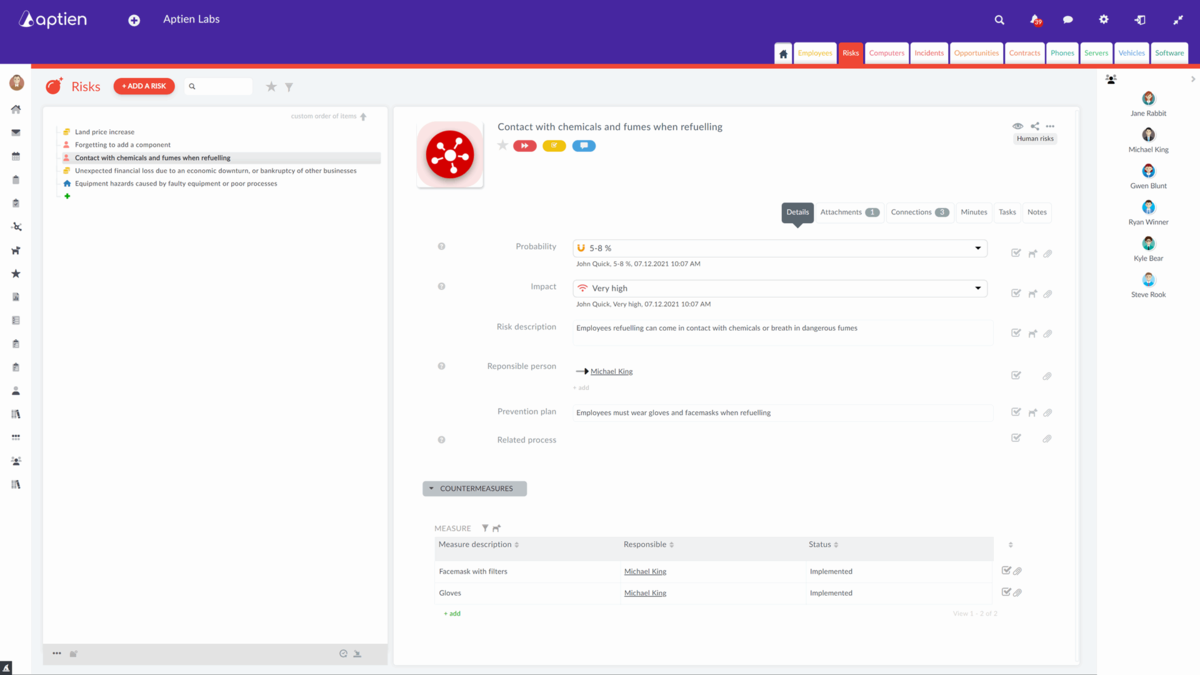Overview of All Risks in Your Organization
The risk organizer is a complete catalog of risks for your company. Use it together with the Countermeasure (Action) organizer to assign and track corrective steps for each identified risk.
Get a Clear Picture of Your Company’s Risks
- Central risk catalog
- Individual risk profiles with details
- Risk map to assess and prioritize
- Track follow-up tasks in the action register
A risk register is a detailed list of all the risks identified in your business, usually created through a careful risk assessment. This register is your main tool for tracking and managing risks. For each risk, important information is recorded, such as its possible impact, how likely it is to happen, which parts of your business it affects, and the steps you’re taking to reduce or prevent it. The risk register is an essential resource for small and medium-sized businesses and plays a key role in managing risks effectively. Risks are then ranked based on their potential impact and likelihood. This helps you focus your time and resources on the most important risks—those that could cause the most damage and are most likely to occur.
- A risk register also helps with regulatory compliance and supports ongoing improvement efforts.
- Usually, each risk is assigned to a "risk owner," who is the person responsible for managing that risk. This assignment is noted in the register.
How to Assess Risk Impact
- Use standard impact levels like Low, Medium, or High to rate the potential effects on your business.
How to Set Risk Probability
- Choose the chance of risk from the dropdown and enter the value
Calculated Risk Level
- Based on a formula, the system will suggest and calculate a risk value.
- As the risk manager, confirm this value (see next step).
How to Set the Actual Risk Level
- The actual risk level may differ from the calculated level.
- Therefore, as a risk manager, reassess the actual risk level and either confirm or enter a different value.
- This value will be considered the actual one for further risk management activities.
